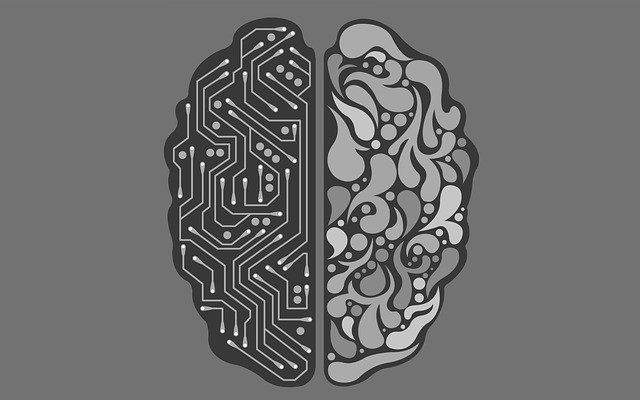AI Can Now Finish Your Sentences, Coming Closer To Reach Our Common Sense
Aadhya Khatri - Nov 20, 2018

Researchers have made a huge progress in making A.I that can understand the use of human language.
- Google Offers Voluntary Buyouts to US Employees Amid AI Push
- Google SynthID: Everything You Need to Know About AI Content Detection
- NotebookLM Mobile App: Enterprise AI Capabilities Now Available on iOS and Android
Making guesses about what a person is talking about by completing what he or she says is not much of a challenge for an average person but quite a difficult task for AI.
However, this year has seen AI making a considerable step in reaching the human’s level of language usage.
This August, Allen Institute for Artificial Intelligence, a Seattle-based lab published results of a test that assesses how well participants can complete unfinished sentences. The questions in this test are easy for any of us. In fact, people took part in the test scored more than 88% while the lab’ AI achieved just about 60%.
60% cannot impress the general public but for AI experts, who well know how hard it can be to build AI that can comprehend the underlying principles of languages; this result is more than encouraging.
After this major achievement of Allen Institute’s researchers, Bert (Bidirectional Encoder Representations from Transformers), the brainchild of Google, proves that it can do even more.
Bert is able to answer the test’s questions as well as a human does. And the best part is; it is not specifically made to answer them. The birth of Bert is the most concrete proof that AI now can learn and apply what they pick up to do a wide array of tasks.
The practical applications for this ability of AI are numerous. From digital assistants to data analyzing software, just to name a few.
Jeremy Howard, the founder of a San Francisco-based independent lab called Fast.ai, is confident that this breakthrough could lift the weight off human’s shoulders in fields like law or medicine. Researchers believe that eventually, AI can tackle one of the trickiest tasks there are, which is to hold a decent conversation.
Jeremy Howard
At one end of the spectrum, there are promising results proving that AI can someday spare us from labor-intensive jobs or even converse with us. At the other end of the spectrum, we have reason to be skeptical about what we read or hear online.
Howard pointed to a specific example. On social media where it is harder to tell if you are chatting with a real person or not, AI can carry conversations like a human does and fools us.
AI has successfully created photos of a faux celebrity that looks like a real person. And now, with the ability to converse, the general public should think twice before putting their trust in anything online.
This system learns by running through and examining human’s real sentences, millions of them. Bert runs through a large number of self-published books as well as one of the largest encyclopedias in the world, Wikipedia; while a product of OpenAI covers just the same books.
This learning process is conducted whenever an AI needs to learn something new. So far, that of OpenAI has been able to make its own guesses about the next word of an unfinished sentence while Bert can fill the missing words in any position.
Wikipedia is one of Bert's sources
By mastering new skills, these AIs can also comprehend how to put words next to each other to build sentences. Jacob Devlin, who supervised the process of making Bert, said that it understands various basic relationships between words in English.
Bert’s ability is not limited there though. If it is fed with questions and their answers, it can learn, find the rules, and then answer other questions by itself.
In another situation when Bert is provided with two sentences that have the same idea, it can tell if other sentences are describing the same event or not. This is obviously a breakthrough as regular machines can only recognize exact matching words.
Bert’s intelligence has been confirmed even in the “common sense” and reading comprehension tests. It can also classify movie reviews into the positive and the negative categories.
Sam Bowman, a New York University natural language professor, said that even though the day when A.I can analyze a huge and confusing amount of information has not yet to come, this was a step forward that shorte the distance between us and that future.
It was not until the arrival of Bert that other researchers’ hope to improve A.I’s language ability was restored. Sebastian Ruder, an Ireland-based researcher admitted that he had misjudged A.I potential and Bert had opened a new horizon for people like him.
Bert's capability is the result of a complex algorithm called neural networks that can identify spoken words and faces.
The neural networks are Bert’s most solid foundation, which was set up by Google’s several processors specially designed to train neural networks. Mr. Devlin said that this was the main reason why Bert was born now, not before, because the amount of data machines can process is now big enough for creating solid networks.
The race for creating more A.I is hotter than ever, with more companies joining in. The competition might result in a wider range of A.I applications, including language. What Bert can do is huge but according to Jeff Dean, who has seen how Bert was developed, it was just the first step to their final goal.
Although it seems that all evidence point in the same direction, which is the fast development of A.I, Gary Marcus, a professor of psychology at New York University and Oren Etzioni, Allen Institute’s chief executive, expressed the same thought with Jeff Dean. The point they made is that researchers have the tendency to put more energy on the tasks they assume they can make a progress and leave aside what they cannot. Besides, even though Bert has passed the “common sense” test, it still has a long way to go to meet the human level of common sense.
Featured Stories

Features - Jul 01, 2025
What Are The Fastest Passenger Vehicles Ever Created?

Features - Jun 25, 2025
Japan Hydrogen Breakthrough: Scientists Crack the Clean Energy Code with...

ICT News - Jun 25, 2025
AI Intimidation Tactics: CEOs Turn Flawed Technology Into Employee Fear Machine

Review - Jun 25, 2025
Windows 11 Problems: Is Microsoft's "Best" OS Actually Getting Worse?

Features - Jun 22, 2025
Telegram Founder Pavel Durov Plans to Split $14 Billion Fortune Among 106 Children

ICT News - Jun 22, 2025
Neuralink Telepathy Chip Enables Quadriplegic Rob Greiner to Control Games with...

Features - Jun 21, 2025
This Over $100 Bottle Has Nothing But Fresh Air Inside

Features - Jun 18, 2025
Best Mobile VPN Apps for Gaming 2025: Complete Guide

Features - Jun 18, 2025
A Math Formula Tells Us How Long Everything Will Live

Features - Jun 16, 2025


Comments
Sort by Newest | Popular